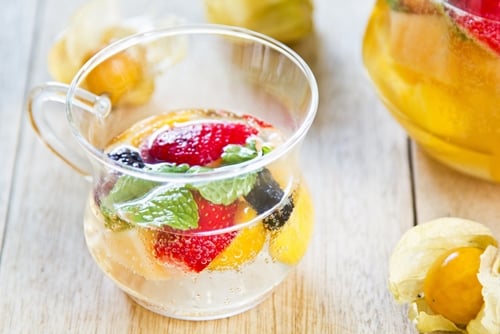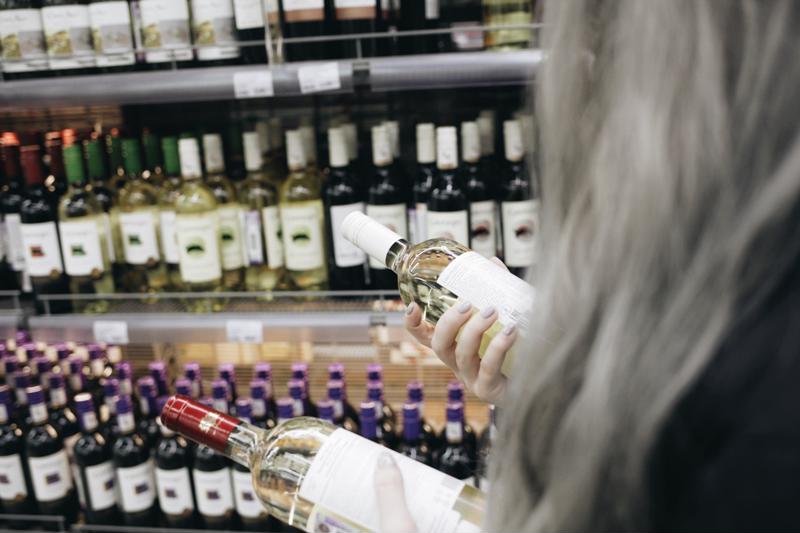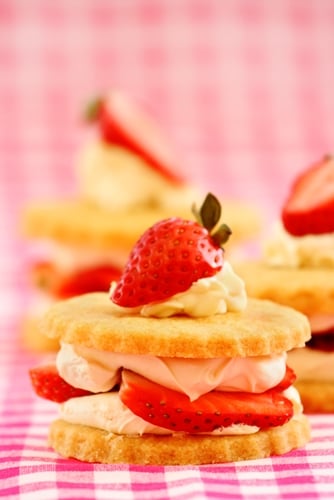
How to Make Your Own Sangria
- Tips and How To's
- 05/08/17
- Share
Imagine you're sitting on a sun-soaked porch with a cool glass of sangria in your hand. Sounds like a nice way to enjoy the weather, huh? Fortunately, you don't have to play out this scenario at a restaurant. Instead, sip a sweet beverage at home by concocting your own sangria. There's an art to this drink, and we've got some tips for making it easier. Here's how to craft your own sangria:
Start With Alcohol
Sangria is comprised of wine and spirits, and all of the other ingredients are predicated on those choices. As such, your first step is to decide what alcohol you'll use. Any wine will do (white, red or rose), so settle on one that you know you'll enjoy. A big red wine fan? Use that in your sangria. Prefer white? That's fine, too. No matter which direction you go, however, purchase an inexpensive bottle that you enjoy on its own. Because you'll be mixing it with so many other flavors, it doesn't have to be top-shelf, but it should still please your palette. Next, choose a spirit that pairs well. Brandy and fruity liqueurs (like orange) are always welcomed.
When serving a crowd, you'll probably use an entire bottle of wine. However, mixing smaller portions for just you and one other person will leave you with leftover wine. Preserve it for the next batch with FoodSaver® Bottle Stoppers. These attachments seal air out of your wine bottles, preserving your beverage for longer.

Balance Your Fruit
Sangria is such a pleasing drink in part because its flavors are balanced. To achieve that, you'll need both a citrus and non-citrus fruit. For instance, fruit that pairs well with red wine include apples and oranges. Lime and raspberries complement white wines.
You can use wine-and-food-pairing rules when selecting the best fruit options. First and foremost, match weight with weight. This means that the fruit flavor should be just as strong as the wine flavor. Additionally, your wine should be sweeter than your fruit. Play around with combination ideas until you find that signature pair.
To prep for the warm weather ahead, chop your fruit right after you go grocery shopping and seal it in FoodSaver® Pint-Size Vacuum-Seal Bags using the FoodSaver® FM5460 2-in-1 Food Preservation System. This allows you to perfectly portion your fruit for a pitcher of sangria so you're ready to mix your beverage at any time. But more importantly, vacuum sealing prevents your perfectly ripe fruit from losing its freshness. High-quality fruit produces a fantastic sangria while overripe or decaying produce can ruin the taste.
Let the Flavors Mix
The hardest part about making sangria is leaving it alone. For the best taste, the fruit needs to release its juices and oils into the alcohol, which takes hours. Most recipes suggest leaving your pitcher in the fridge overnight. However, if you're feeling impatient or hosting a last-minute get-together, speed up the process by vacuum sealing. The storage method helps open food pores, allowing ingredients to mingle faster than they normally would. Simply store your sangria in mason jars and use the FoodSaver® Wide-Mouth Jar Sealer to remove the air. After a few minutes, serve the sangria directly in the jars - this is a photo-worthy way to serve your beverage.
Top it Off
Cool your sangria down with ice and give it zest with carbonation. You can add sparkling water to your pitcher after it's rested, or infuse extra flavor with carbonated juice. Either way, this step comes last because resting sangria will lose its carbonation over time.
A refreshing glass of sangria is perfect for warm weather, and you can make it right at home with fresh ingredients and smart vacuum sealing.



